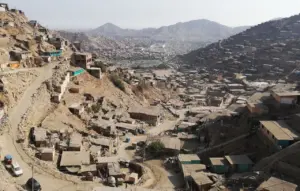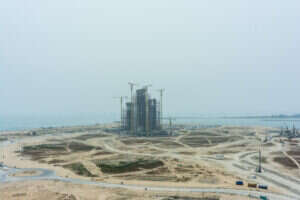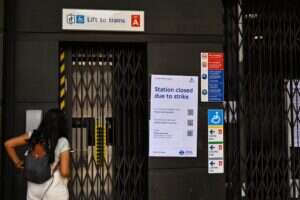The thing about natural disasters is that they’re rarely as natural as they seem. Of course, earthquakes, landslides, and wildfires stem from natural causes, but the disasters they wreak often have as much to do with the response and preparation of those nearby as they do with the event itself.
On the last episode of our Skylines podcast, we discussed the fact that what may seem like a natural disaster can also be a failure in city governance. Nepal’s 2015 earthquake was so devastating partly because many buildings in Kathmandu, the capital, were not built to withstand earthquakes, despite the fact that they’re common in the region. While authorities knew an earthquake was likely, they did little about it in advance.
This brings us to a map that landed in my inbox today from the University of Leicester. Researchers there have been studying areas of wildland which lie close to urban centres. It turns out this combination of landscape factors leads to a “serious risk” of wildfires.
You’re more likely to have tourists tending barbeques in wild areas around cities, and temperatures tend to be higher in general near urban centres thanks to the Urban Heat Island effect. Meanwhile, if a fire does occur, it’s more likely to reach people and their homes.
By mapping the “Wildland-Urban Interface” areas (WUIs) across diffferent regions, the researchers believe they have mapped the risk of wildfires across urban areas in Europe:
Particularly at-risk areas include Catalonia, Madrid and Valencia.
Researchers also focussed a second map on regions which have experienced serious fires. Most are in the south of Europe, where conditions are warmer and drier:
Interestingly, the risk of forest fires has slightly gone up since farmers were hit by the financial crash. Many areas once used as farmland are now wildland which is vulnerable to burning, especially in the hotter, drier areas of southern Europe.
Professor Heiko Balzter, Director of the Centre for Landscape and Climate Research at the University of Leicester, said that “to find that we can use [the] map to predict fire risk was a real breakthrough”.
Now, he continued, it’s up to local authorities to put the data to use before it’s too late:
“In the regions we have identified as high-risk, local authorities need to prioritise fire risk control and develop better forest fire risk management strategies.”
Indeed.








